
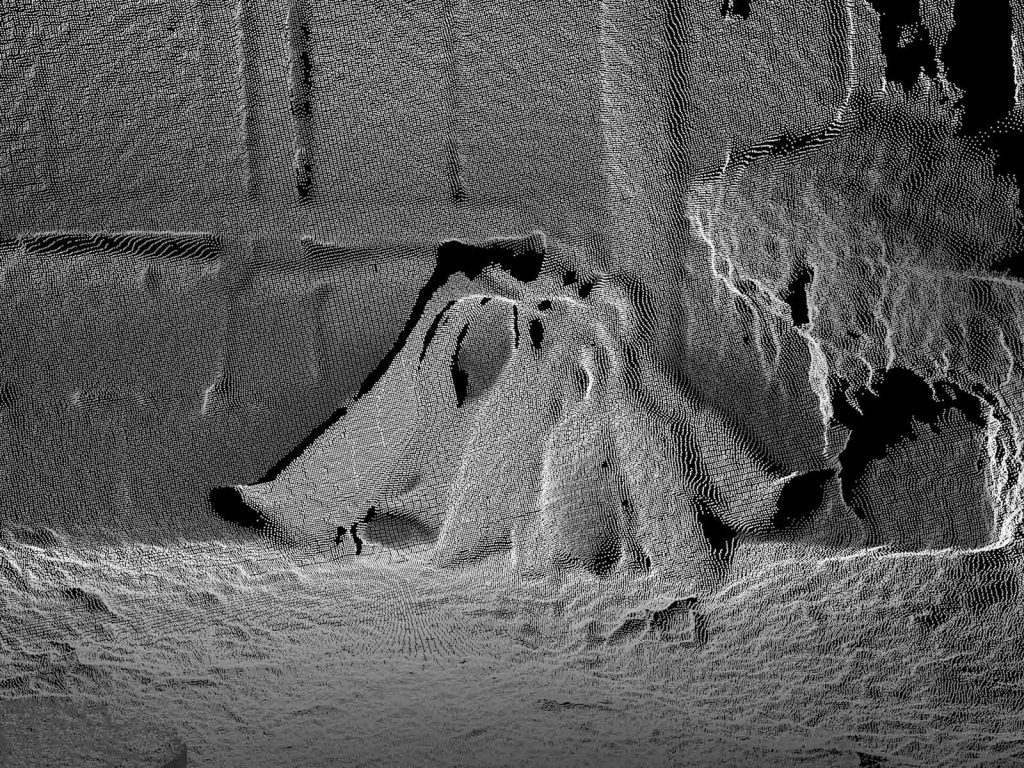
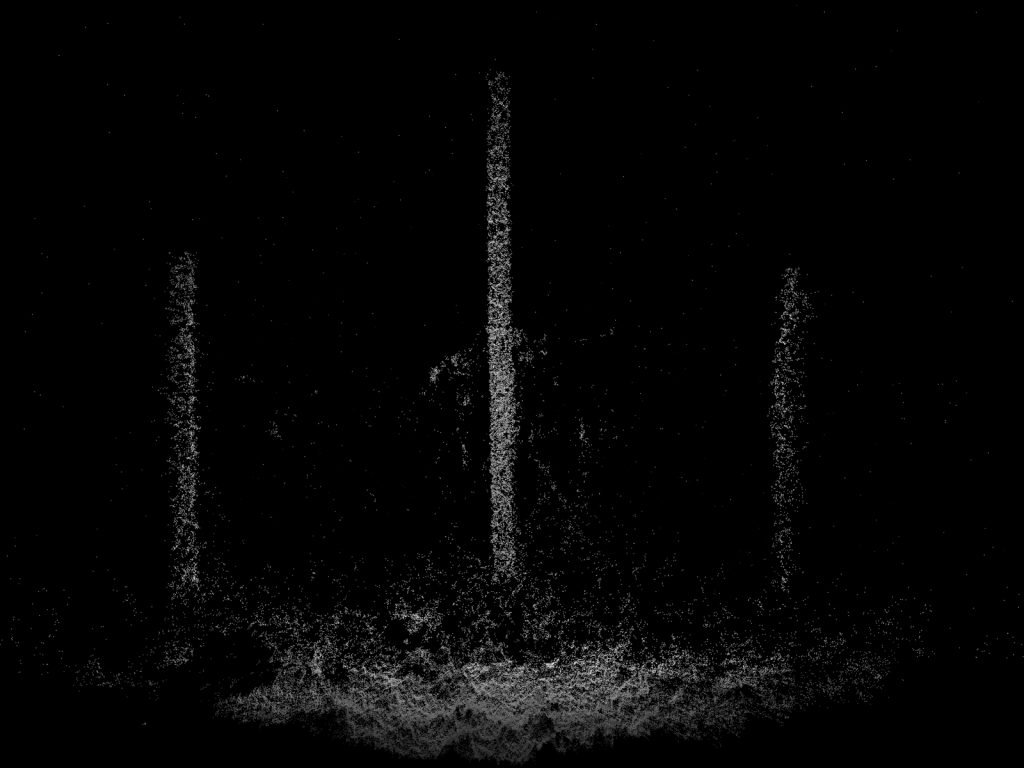

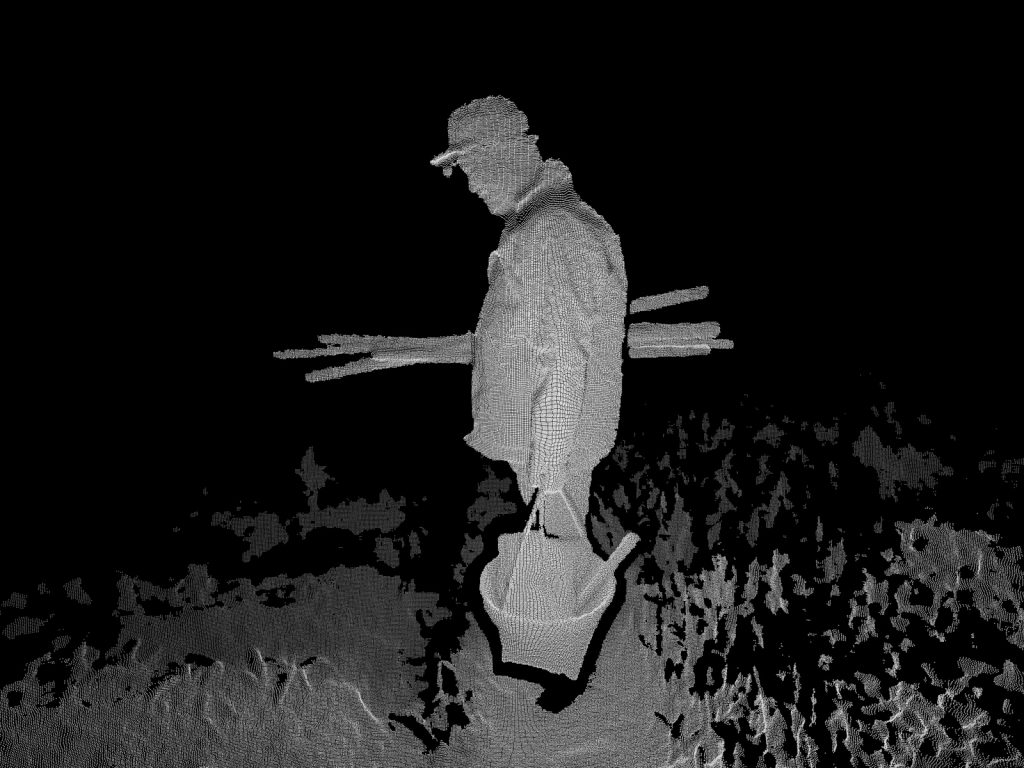
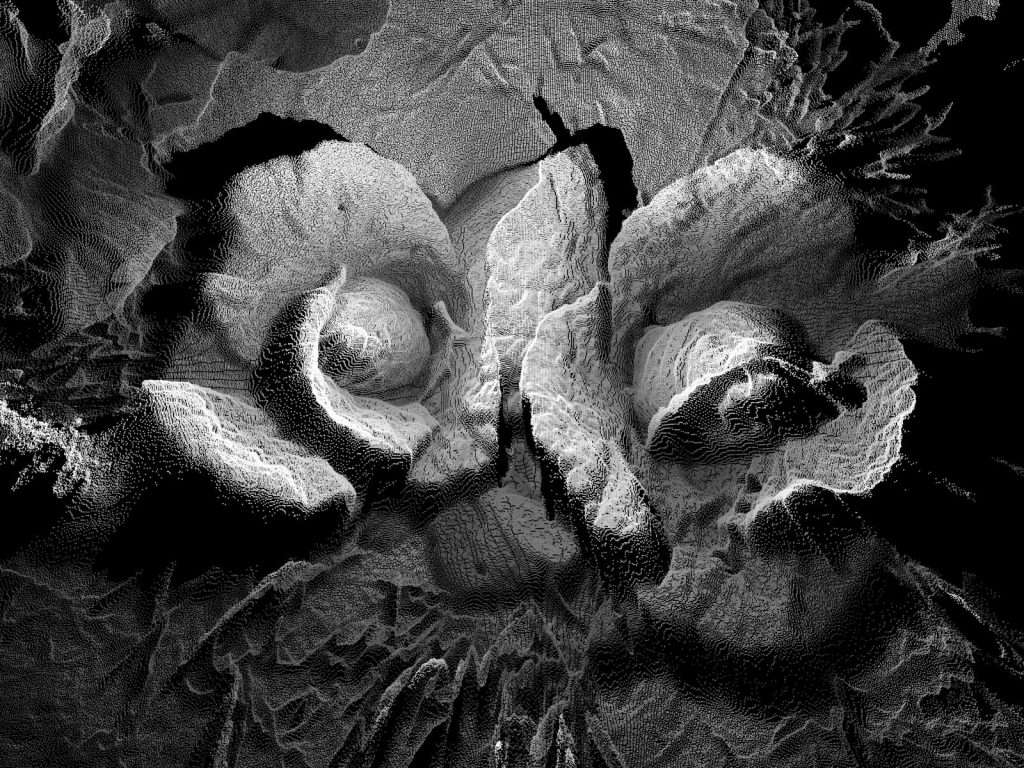
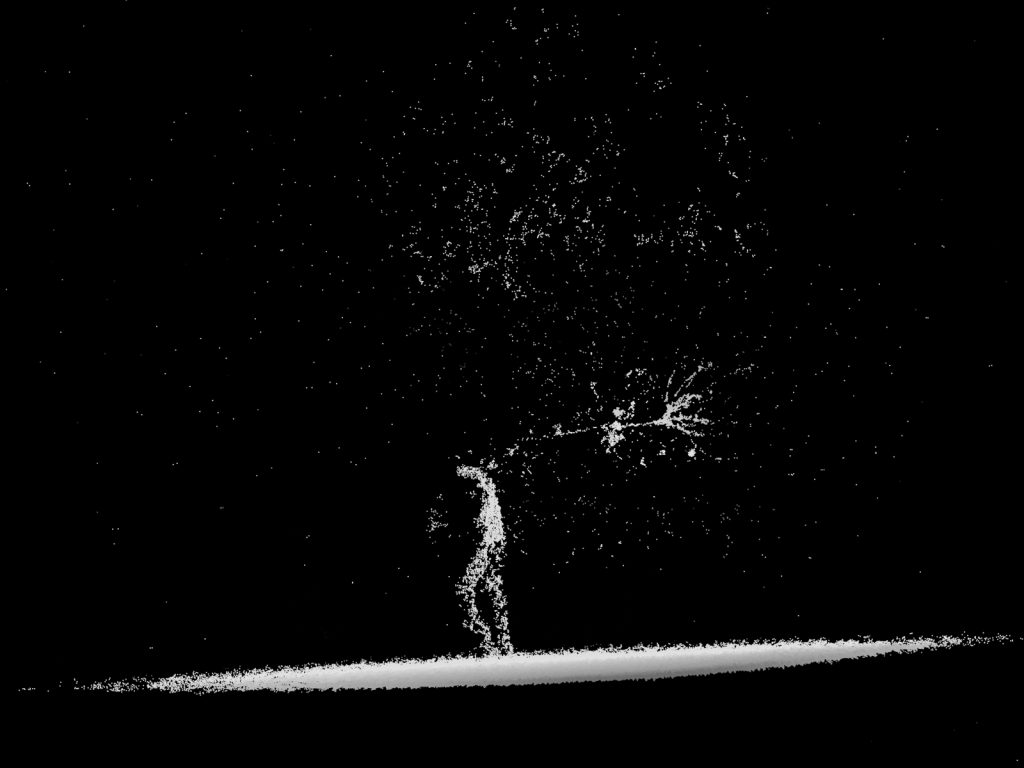
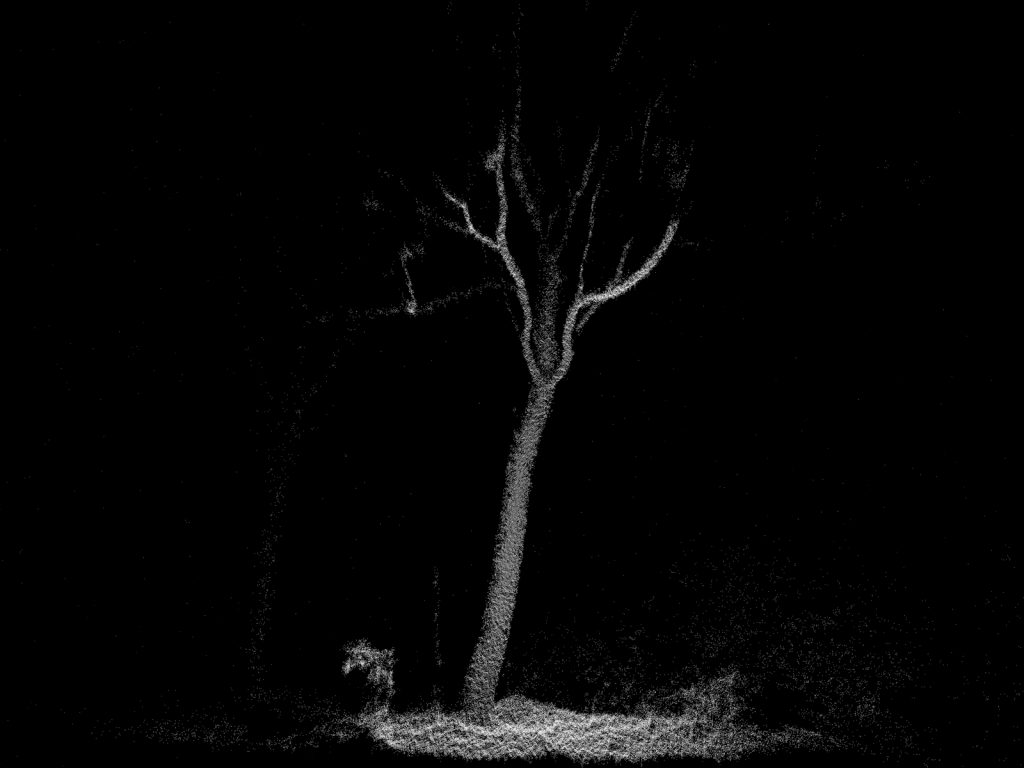

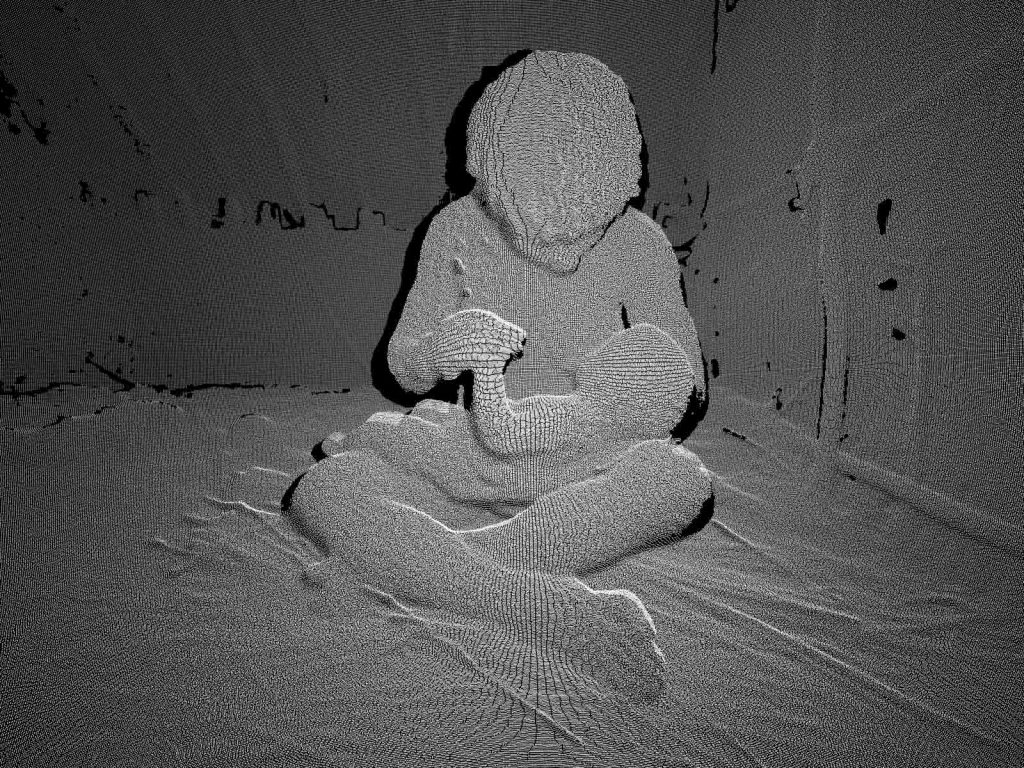
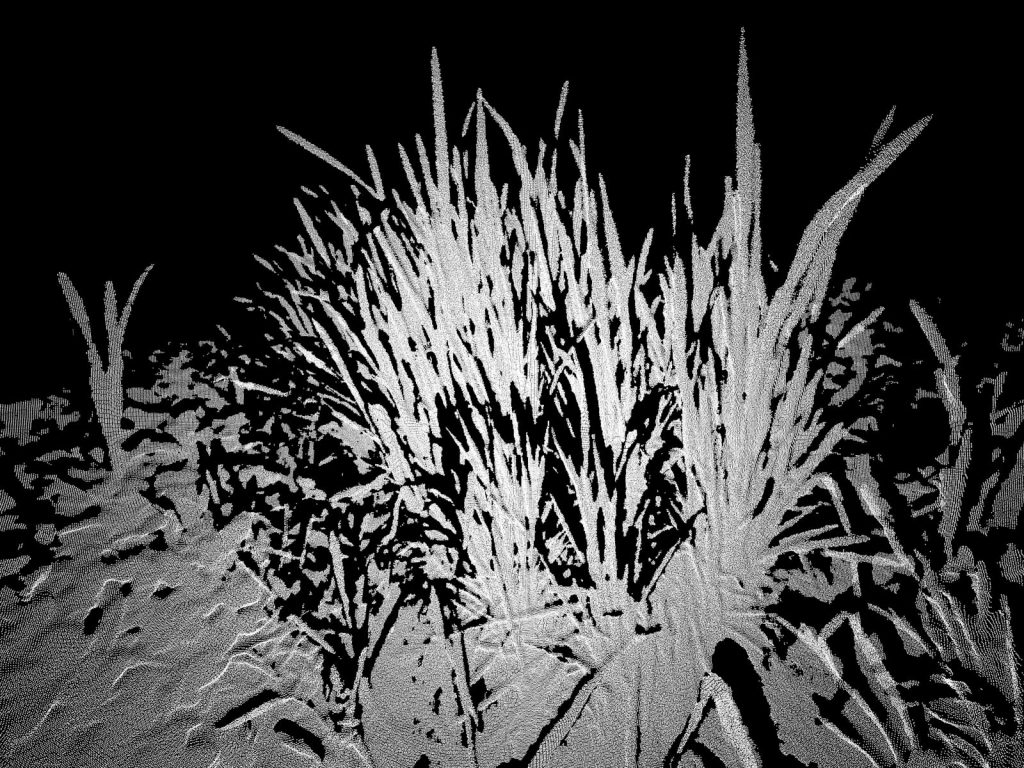
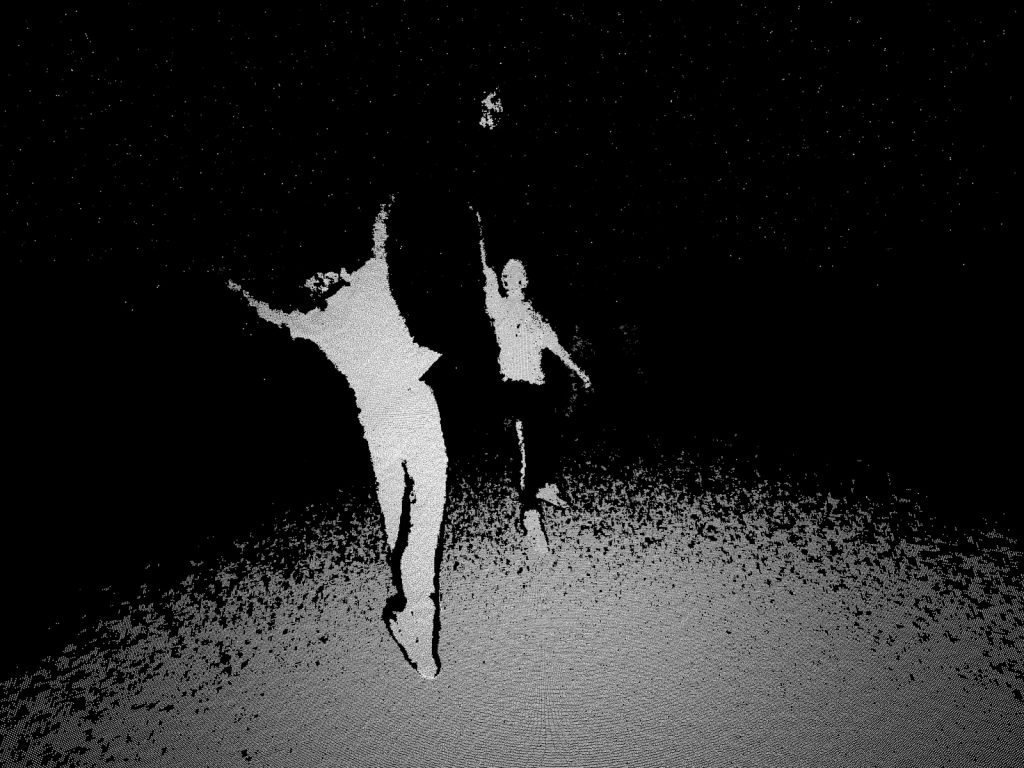
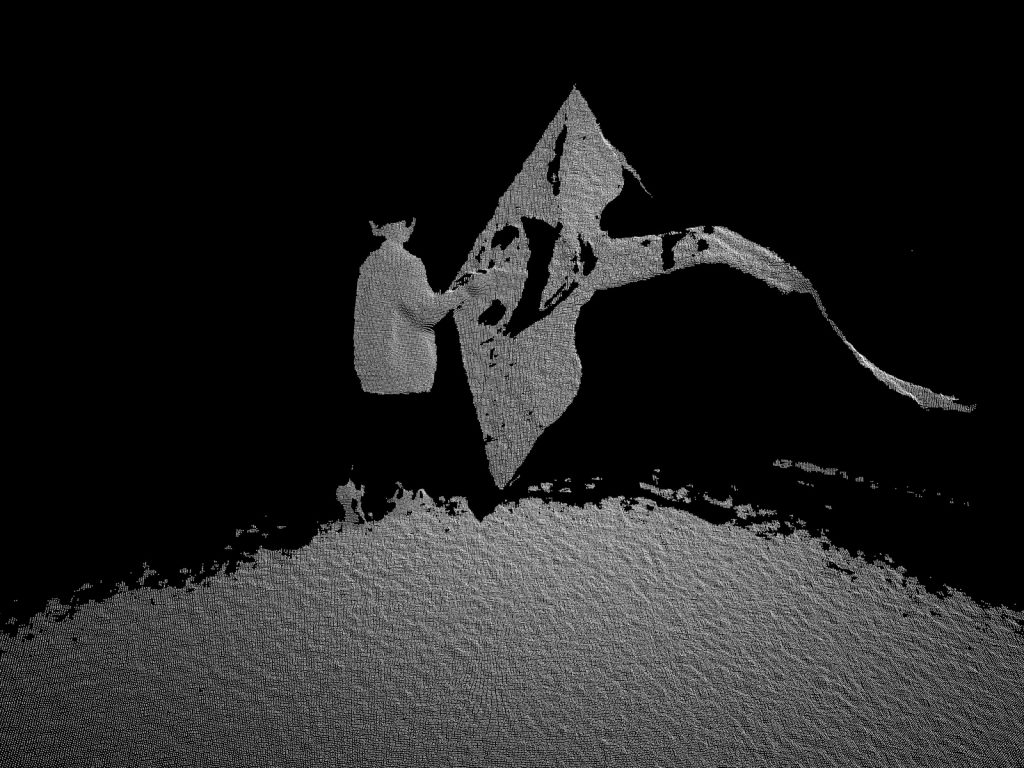
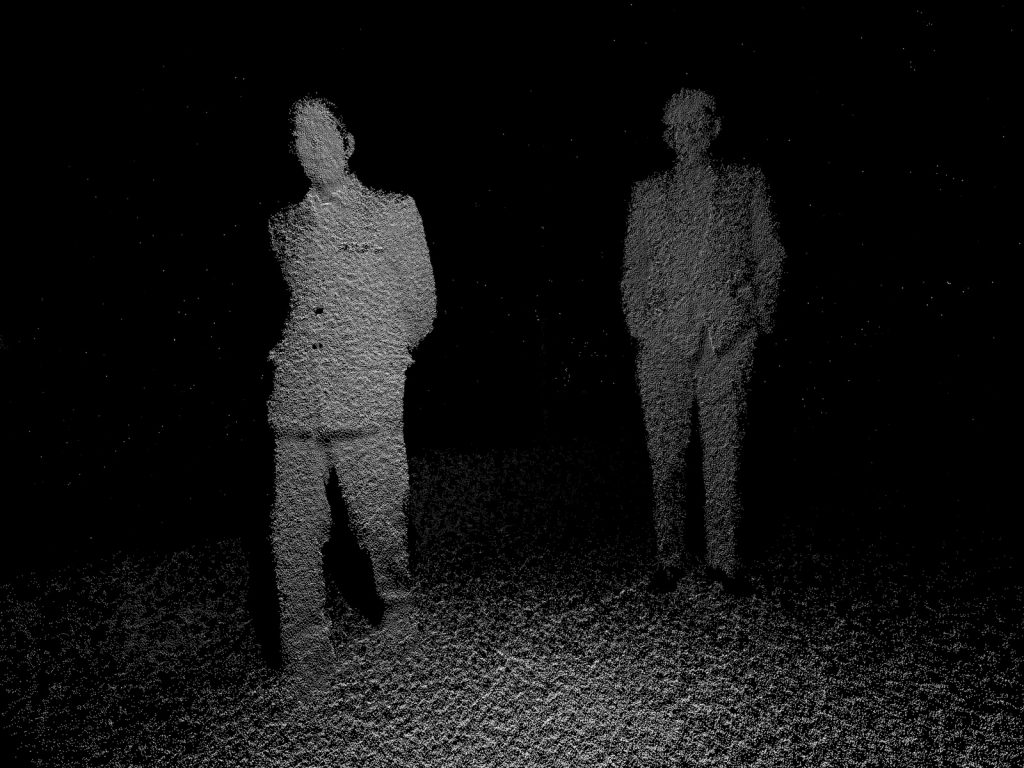
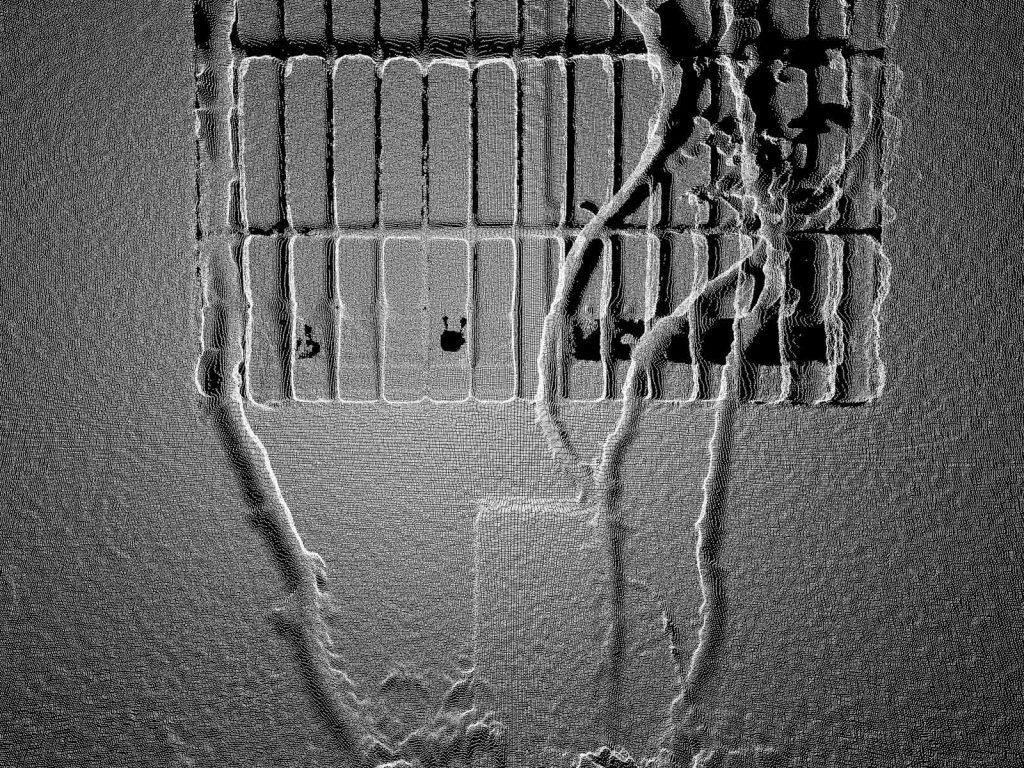
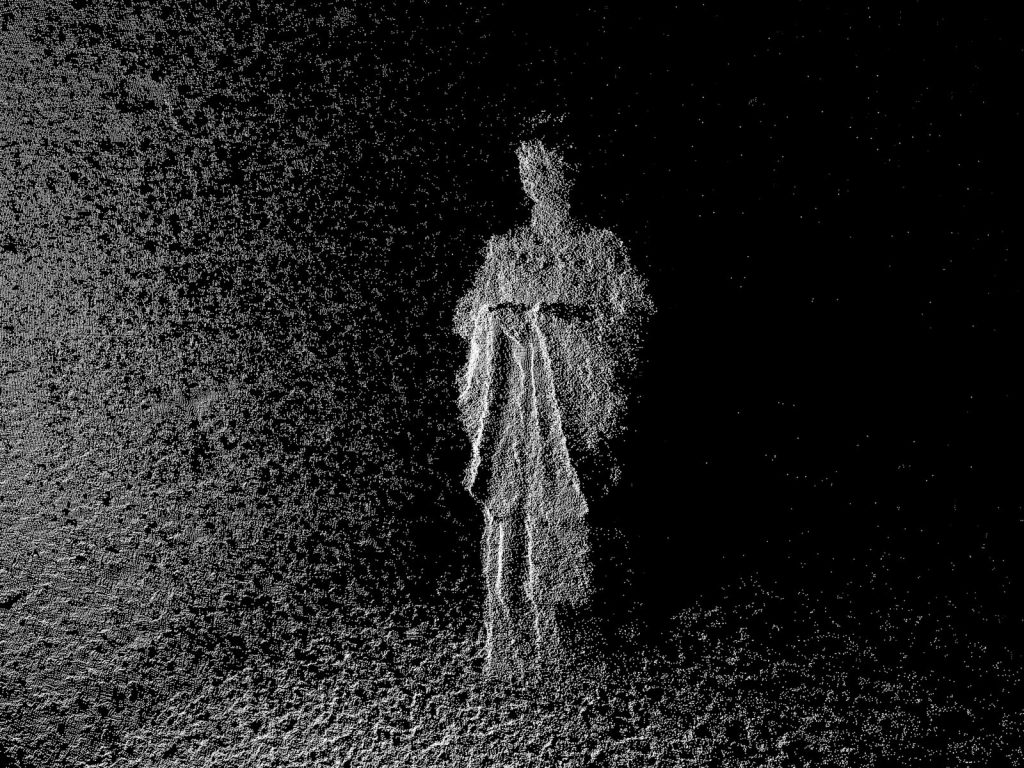
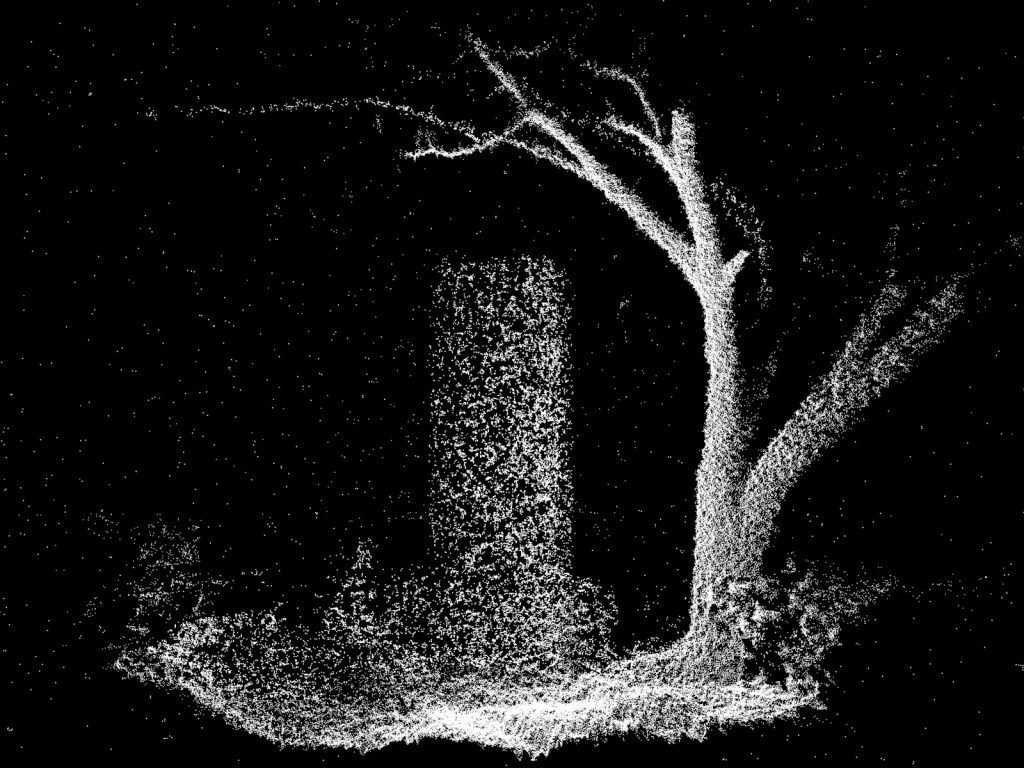
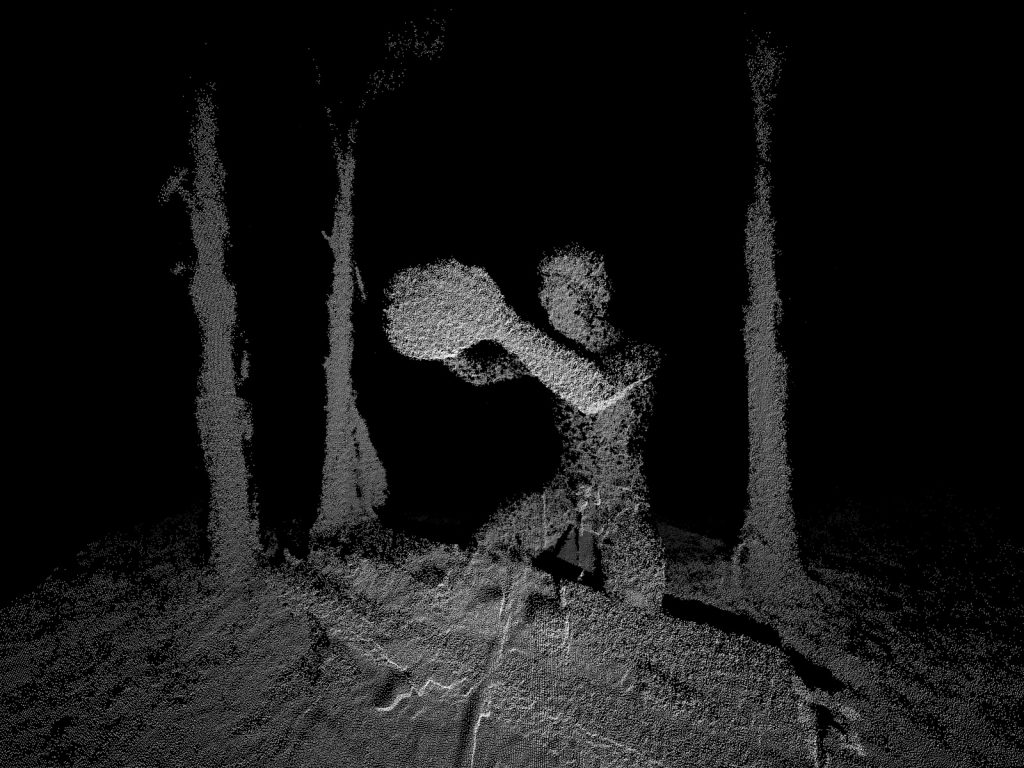
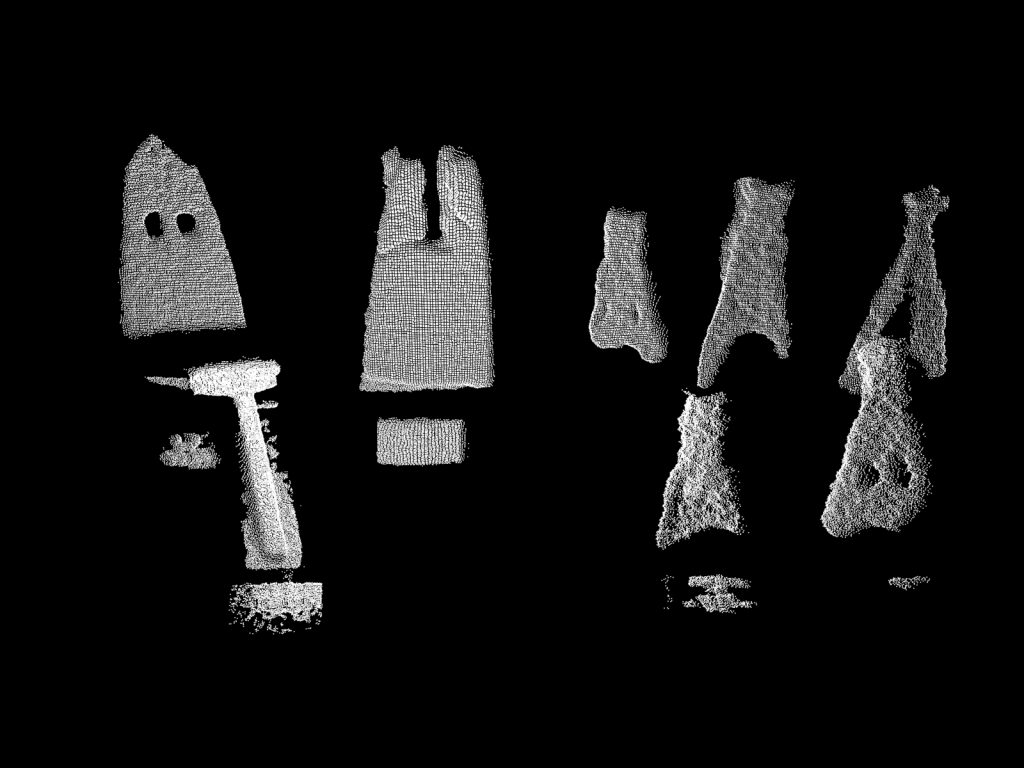
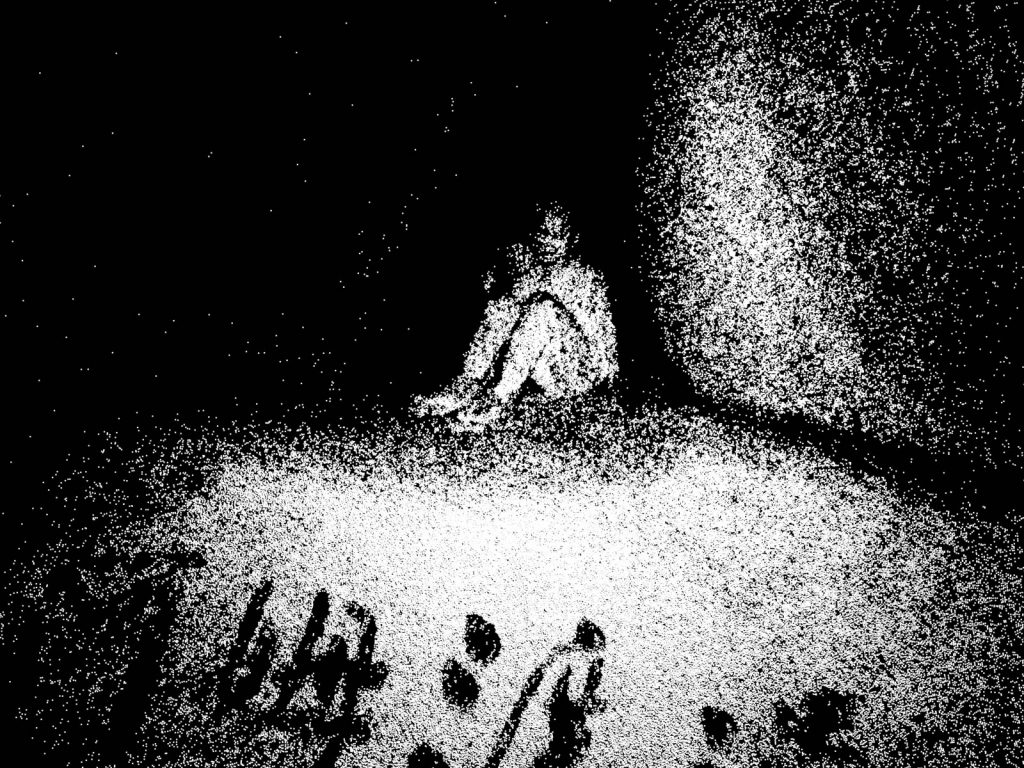
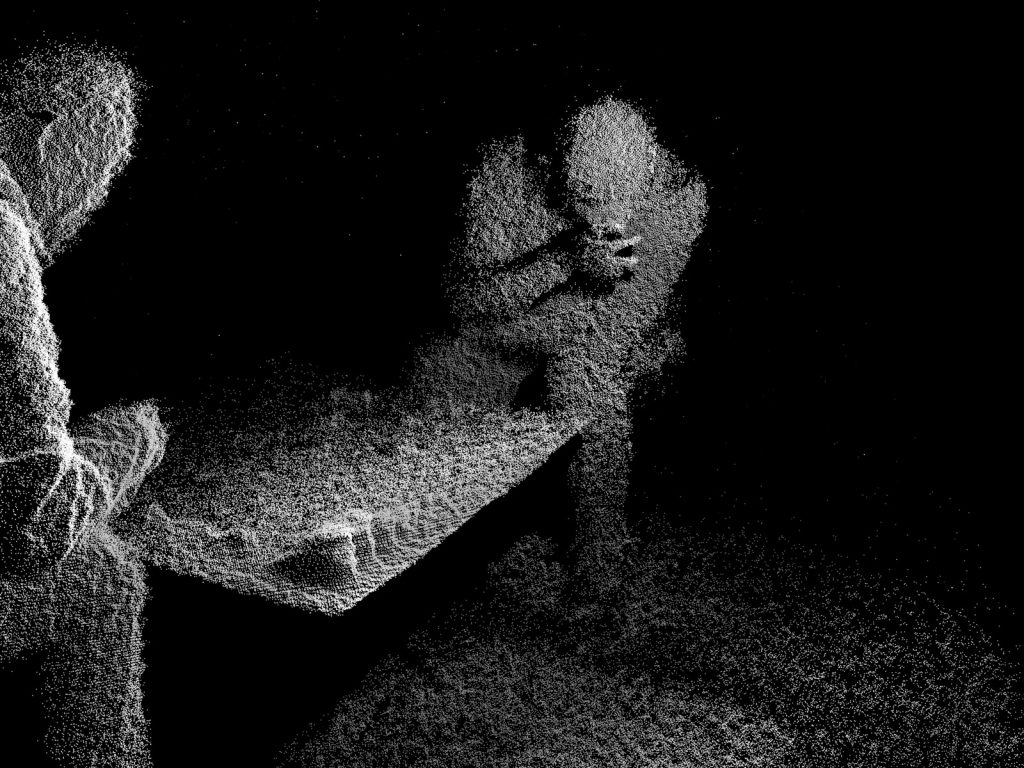

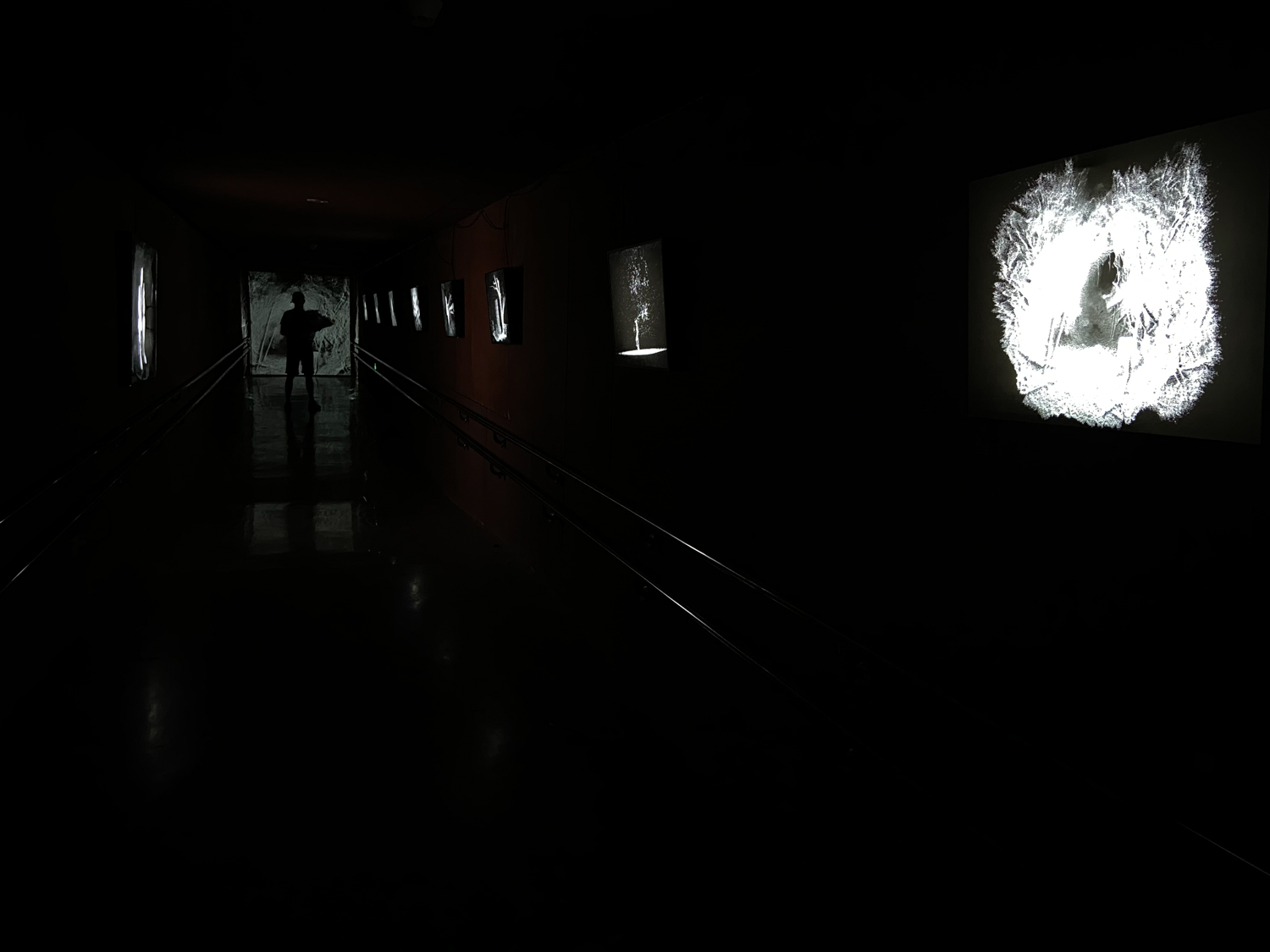
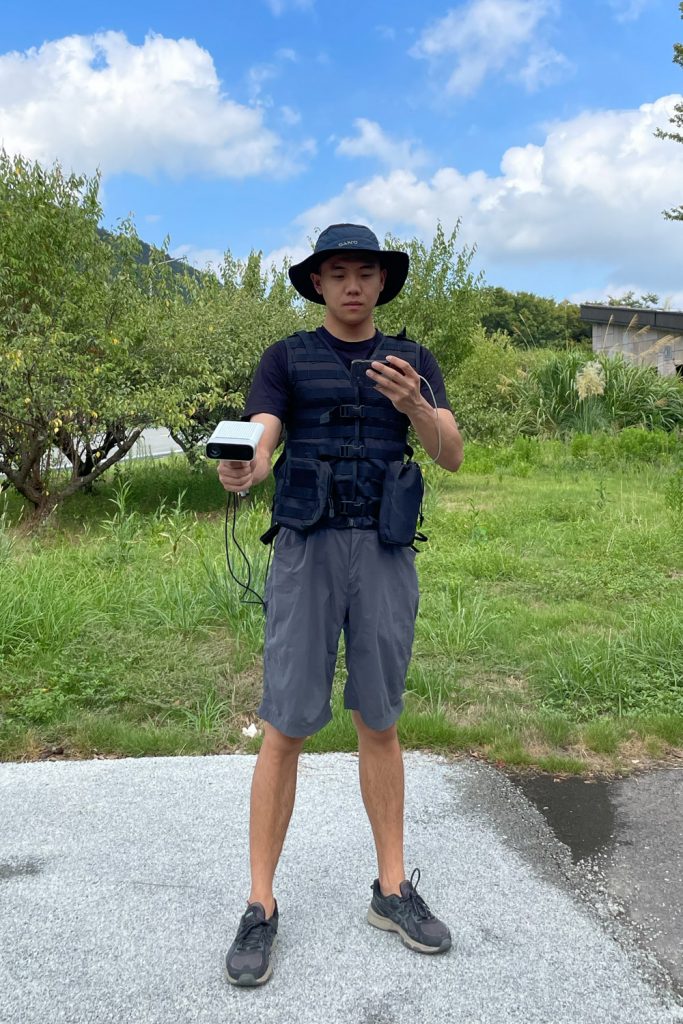
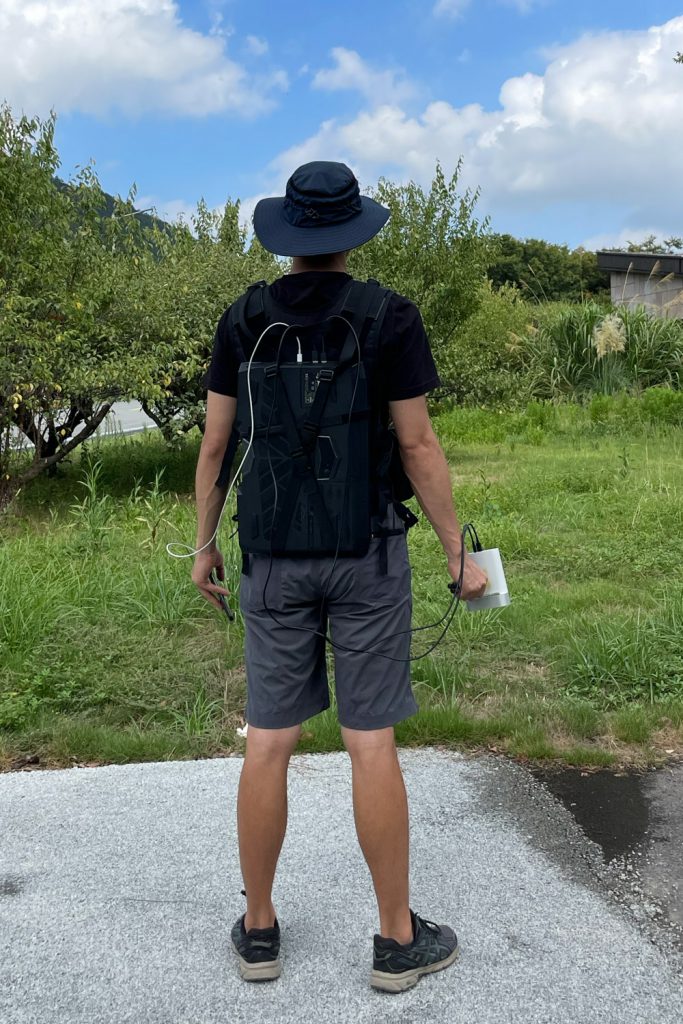
江水无孔不入
长江在浙江余姚段的支流——姚江虽然是我的母亲河,但一直以来它并真正涉足到我的记忆深处。直到2013年台风“菲特”过境,我站在排涝之后也依旧被泥沙覆盖的街道,如同身处于考古现场,等待去发掘日常。在街角,我看见了一匹沾满泥沙的木马,它让我想起父亲从前带我在江边骑马的下午。
后来,这段经历在我的脑海中一直挥之不去。它不断地把我往时间原点拉,我的思绪最终回到了远古时期,姚江下游河姆渡人的日常生活也是随着水位变化而封存或开启的。直到我发现点云影像与沙泥的质感相似,因此我沿着姚江步行,依次拍摄了当下的日常、父辈的痕迹和河姆渡遗址,期待以对江水侵袭后的日常景观的“再现”,阐明自然力量与一代代人日常生活的分离、互动与调试。
The River Goes Everywhere
Although it is my mother river, the Yao River, a tributary of the Yangtze River in Yuyao, has never really penetrated into the depths of my memory. Until Typhoon Fit left in 2013, I stood on a street still covered with mud and sand, waiting to discover the daily life as if I were at an archaeological site. At the corner of the street, I saw a mud-covered wooden horse. It reminded me of the afternoon when my father took me to go horseback riding along the river.
Later, the experience lingered in my mind. It constantly pulled me back to the origin of time, and my thoughts ultimately returned to ancient times, where the daily lives of the Hemudu people along the lower Yao River were also sealed and revealed by changing water levels. It wasn’t until I noticed that the point cloud imagery resembled the texture of sand and mud that I walked along the Yao River, sequentially photographing everyday life today, the traces of my parents’ generation, and the Hemudu Site. I hoped that this ‘re-presentation’ of landscapes, shaped by the river’s erosion, would clarify the separation, interaction, and adjustment between natural forces and the daily lives of generations of people.